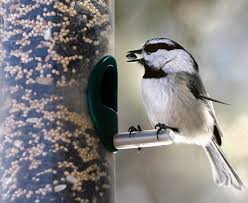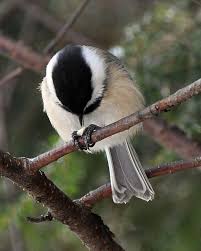By BA Nester
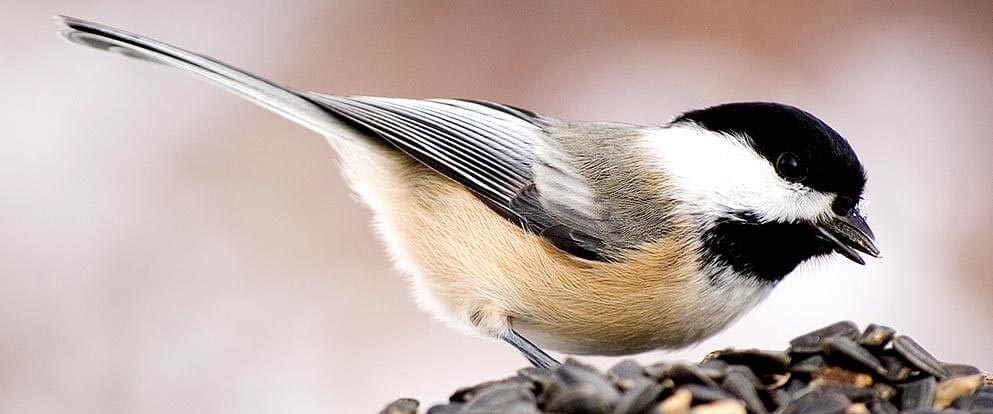
“A bird almost universally considered ‘cute’ thanks to its oversized round head, tiny body, and curiosity about everything, including humans. The chickadee’s black cap and bib; white cheeks; gray back, wings, and tail; and whitish underside with buffy sides are distinctive. Its habit of investigating people and everything else in its home territory, and quickness to discover bird feeders, make it one of the first birds most people learn.” This is how All About Birds, the identification website of Cornell Ornithology Lab, describes the Black-capped Chickadee. As a matter of fact, except for the description of it’s colors, this description fits all 5 species of the chickadees of North America! They’re ALL CUTE!
GENERAL INFORMATION ABOUT ALL CHICKADEES:
These 5 species of Chickadees of North America have some overlapping territories and they pretty much cover the continental USA, except for the south-western states. We recognize their “Chick-a-dee-dee-dee” song. They are all easy to attract to your feeders if you put out black-oil sunflower seed, suet and peanut chips. They fly to the feeder, chose a seed and fly off to a branch to crack and eat it.
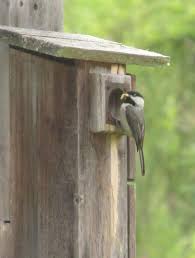
They all seem to like nest boxes or nest tubes, but some are pickier than others as to whether or not they like sawdust or wood shavings in the nests. Always remember to put your nesting boxes up well-before breeding season so the birds can scout them out! A predator guard at the nest opening is really important to protect the eggs and the baby birds!
Have you noticed when a Chickadee is at your feeder there is usually a Tufted Titmouse, a Northern Cardinal and/or a Nuthatch or two? These species commonly associate with one another, even to the extent of migrating in mixed flocks. These flocks often have the same individuals in the summer and winter flocks staying together year-round. Of course there are always some “flock switchers” that go from one flock to another. They are usually the birds that are on the lower end of the flock hierarchy.
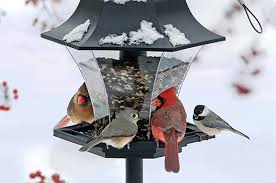
Within the flock there are many pairs that stay together for some years, and there are others who don’t … females seeking out other males if their nesting was unsuccessful.
BLACK-CAPPED CHICKADEE:
The Black-capped Chickadee has the largest range which often overlaps with other species. Sometimes, there is hybridization between the species. The Black-caps are tiny and quick and if you have patience and an established feeder, they might be able to hand-feed them! It is so delightful! It’s like having a butterfly land on your fingers … so lightweight! The Black-caps do prefer woodshaving or sawdust in their nesting boxes!

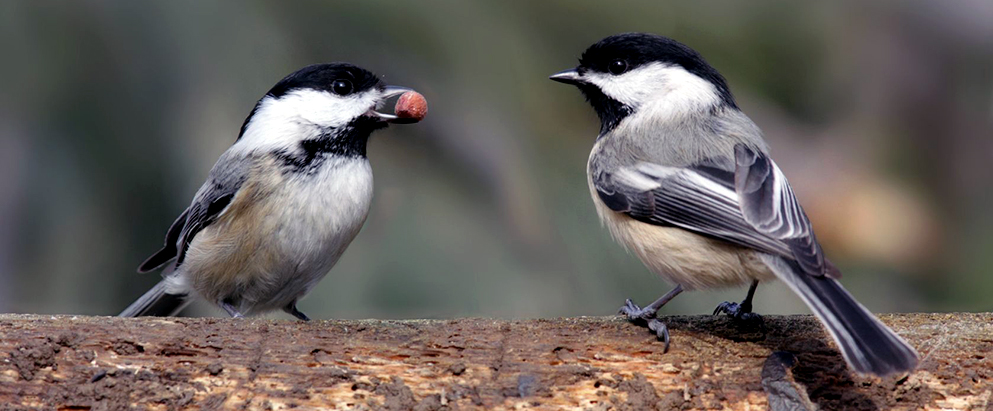
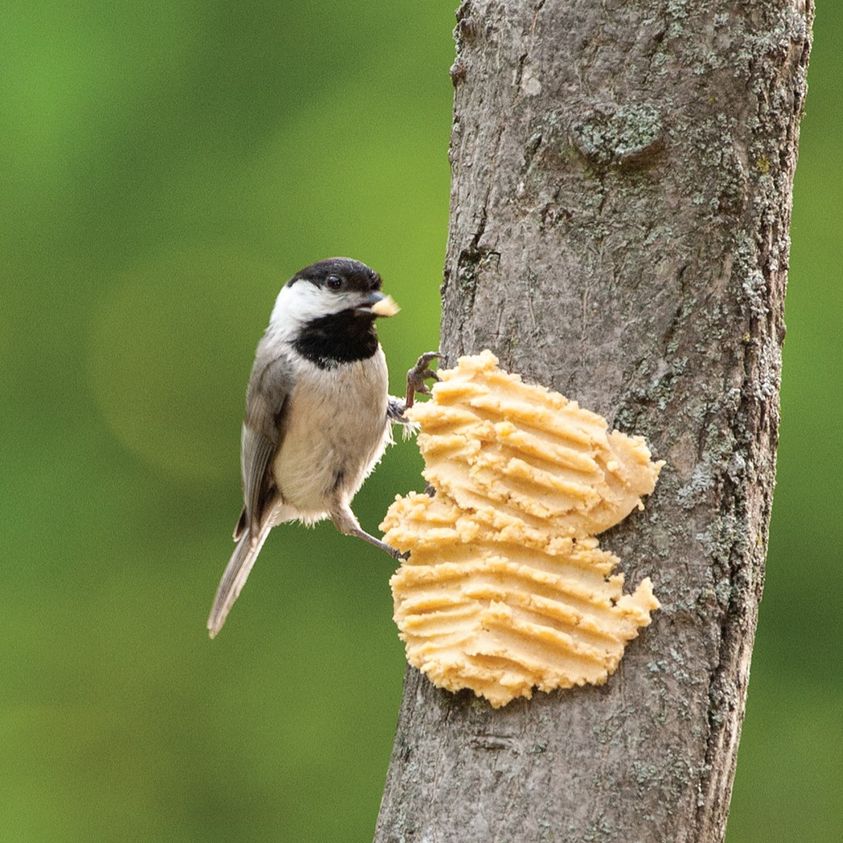

CAROLINA CHICKADEE:
While he was in S Carolina, John James Audubon named the Carolina Chickadee. The curious, intelligent Carolina Chickadee looks and behaves very much like his cousin, the Black-capped Chickadee. The Carolina Chickadees don’t seem to care one way or the other if there are shavings in their nesting boxes. Something interesting, when the Black-capped and Carolinas hybridize, the hybrid birds often sing the songs of both species, or sometimes they make new songs!

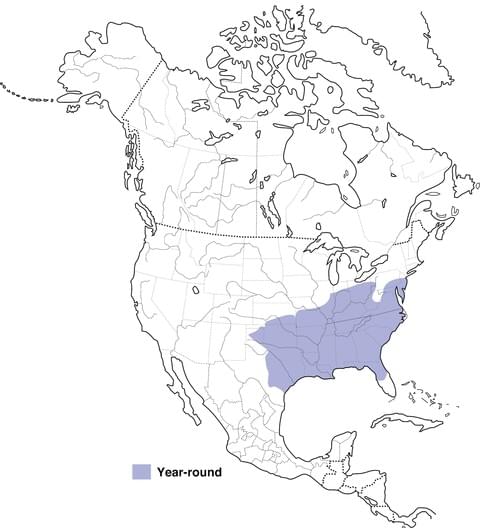
MOUNTAIN CHICKADEE:
This tiny Chickadee is a busy little guy living in dry evergreen forests of the mountainous West. They are usually found in the center of a mixed flock of small songbirds. The Mountain Chickadees flitter through the high branches, hanging upside down to get at insects or seeds from pinecones. Typical to all Chickadees, they use their scolding call to get your attention or to warn their partners of predators. They like the same nesting boxes and the same food as their cousins. And like the rest, they cache seeds away for the winter time!
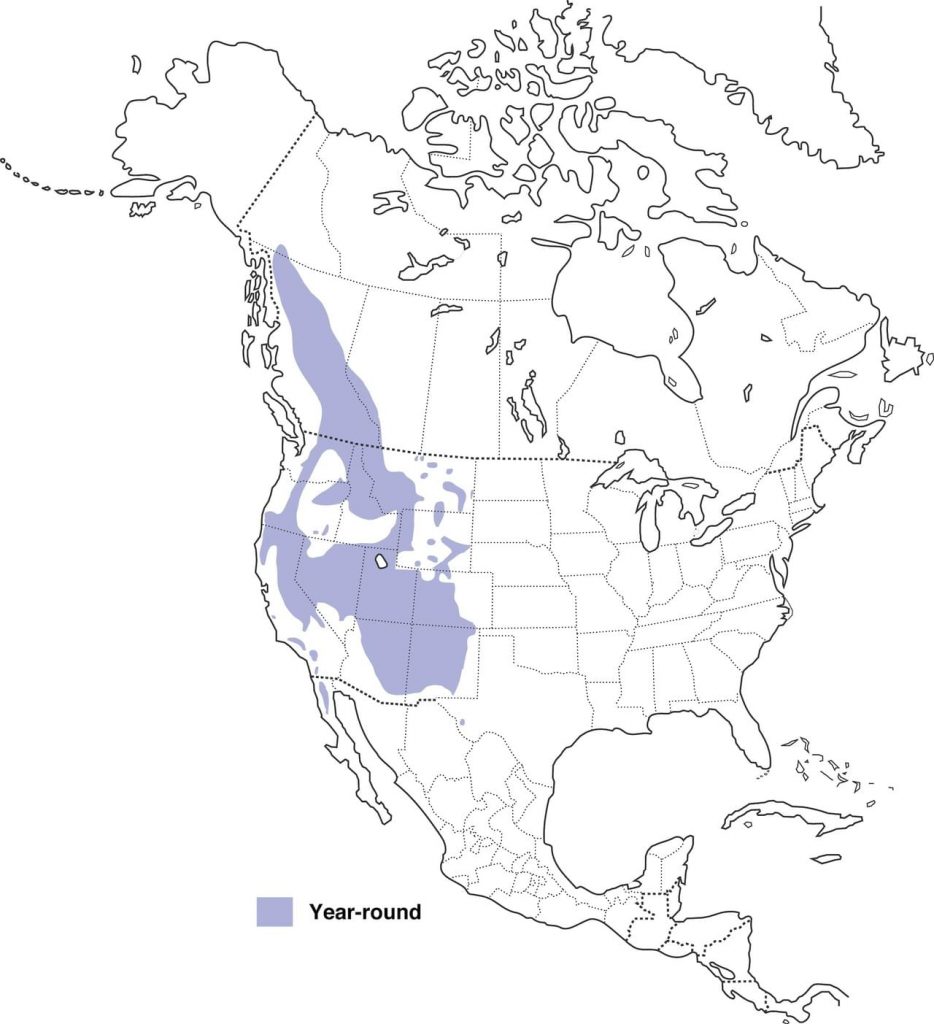
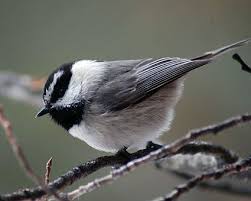
CHESTNUT-BACKED CHICKADEE:
The Chestnut-backed Chickadee has a TINY range in comparison to the rest of their cousins! These beautifully colored chickadees are very active, social and noisy, just like the rest of the chickadees. They, too, can be found in mixed flocks of songbirds, foraging for food. They like the same food as the other chickadees and are always happy to find your feeders! You often spot them high in the branches of coastal conifers, or, like their cousins, lower down in shrubs in yards or parks!
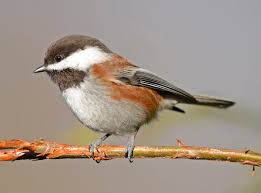
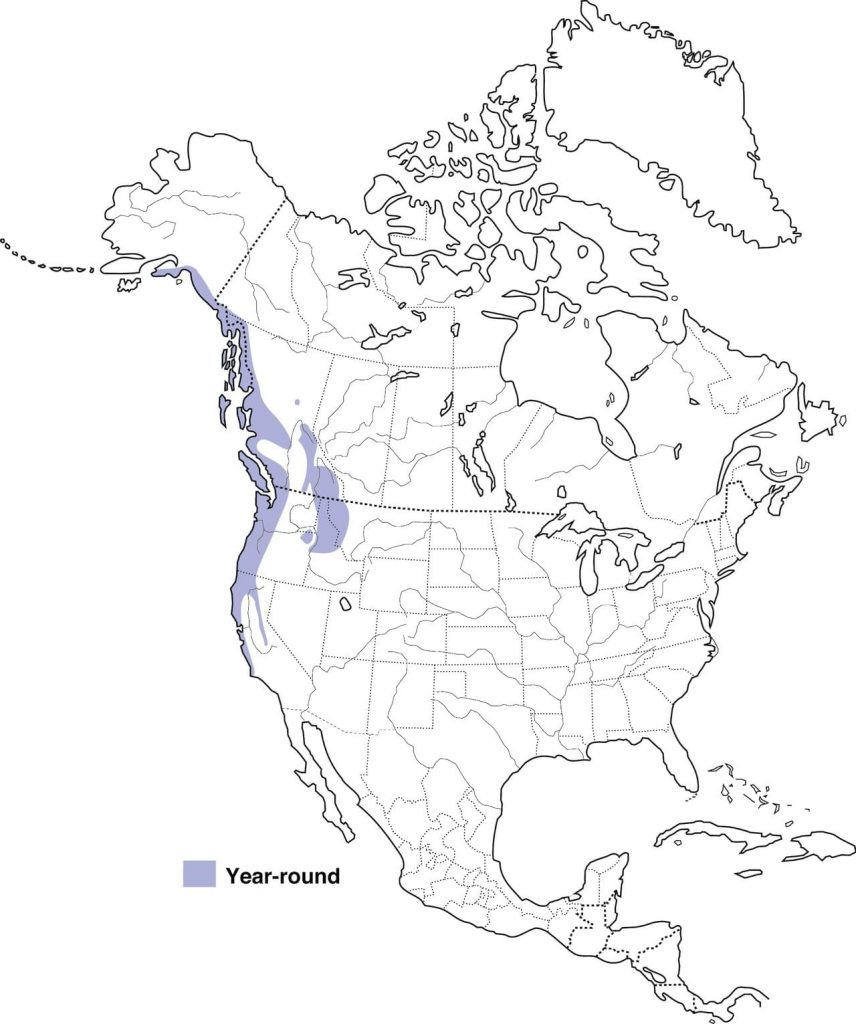
BOREAL CHICKADEE:
The Boreal Chickadee is found way up in the top of the Chickadee ranges of North America in Canada and Alaska. They are less common and therefore, they require greater patience to find! They have a brown “cap”, rather than the black caps of their cousins AND they have a variation in their song. The Boreal says, “tschick-a-dee-dee”. They also have a variety of localized names in Canada: the tom-tit, chick chick, and fillady. They, too, forage and fly in mixed flocks, often with Kinglets. They love backyard bird feeders AND they are BIG TIME cachers as they have a long, brutal winter to get through each year! It’s the only one of the Chickadees I haven’t seen, but would love to hear it call and spot it foraging around the trunks of balsam firs or spruce trees.
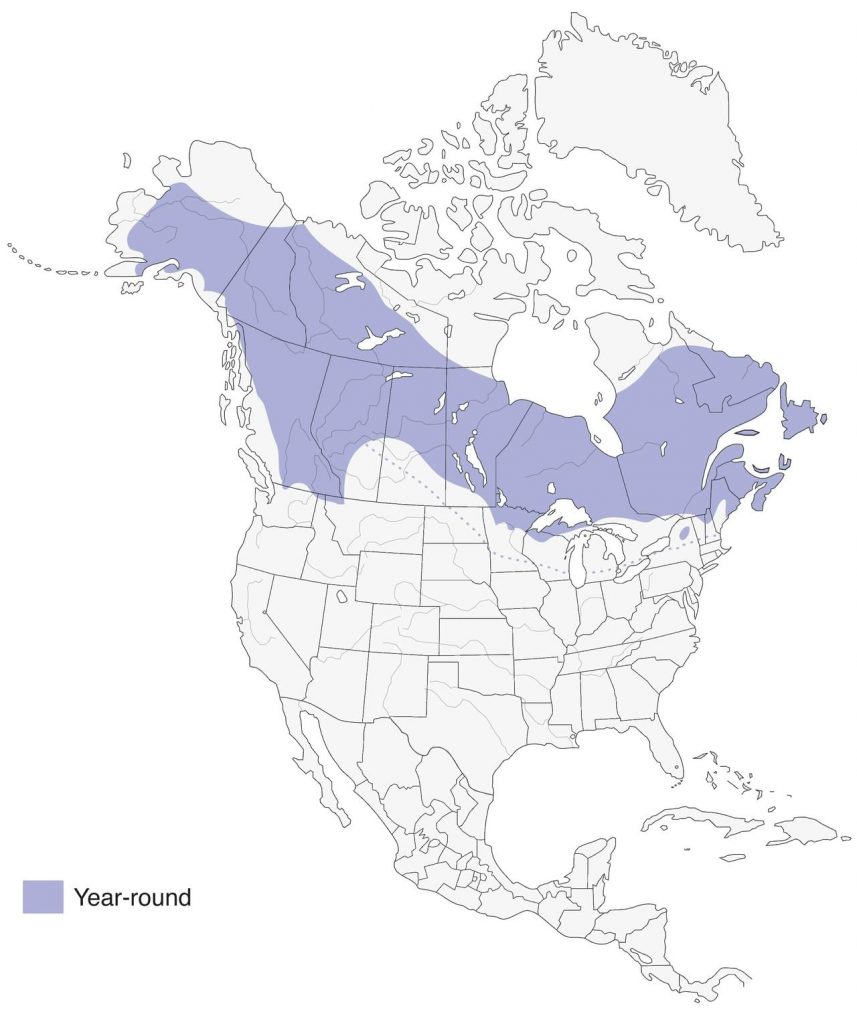

There you have it – the 5 species of Chickadees in North America! Keep your feeders clean and filled with fresh, dry black-oil sunflower seeds and peanut chips! Buy or make some suet blocks or balls! Put up a nesting box or two and before you know it, you, too, will have some Chickadees and all of their compatriots at your backyard bird feeders! Happy Birding!
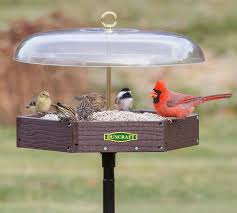
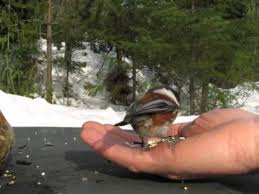
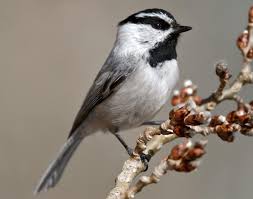
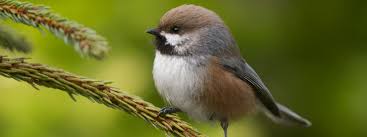
And to keep your Birding skills sharp, do a quick session of WHAT BIRD IS THIS with your Sibley Backyard Bird Flashcards! It’s really fun!!!
